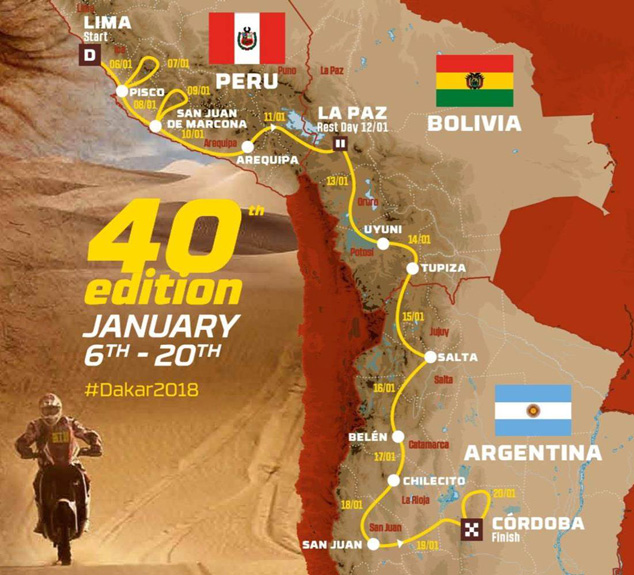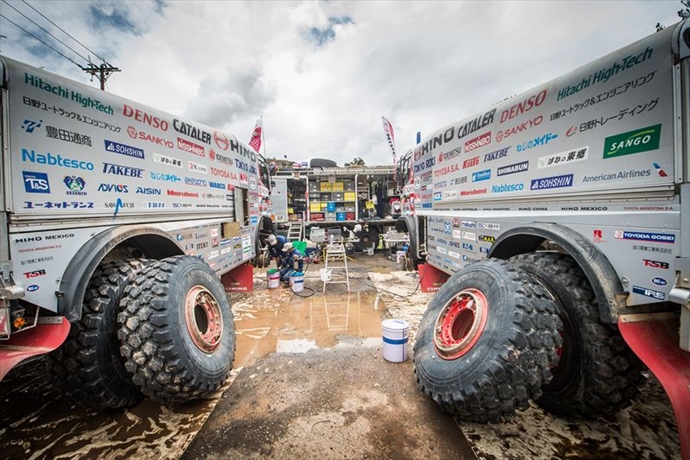
Where it all began..
The Dakar Rally was started in 1978 by a young adventurous Frenchman named Thierry Sabine. During its early years, it was called the Paris-Dakar Rally because at the time the race started in Paris, the capital of France, and finished in Dakar, the capital of Senegal. However, the rally had to be cancelled in 2008 due to rising political uncertainties in Africa, where the bulk of the race was carried out. It was relocated to the South American continent in 2009, and is currently called the Dakar Rally.
How does it work?
The Dakar Rally is a time competition where contestants compete for two weeks over a distance of approximately 10,000km, traveling over off- road terrain including sand dunes, deserts and wastelands. The rally is referred to as the “world’s most grueling rally,” and over the years, it hasn’t been unusual for less than half the contestants to make it to the finish line. This has only spurred the contestants’ spirit of challenge, however, as each year it attracts more than 300 entrants from over 50 countries in five categories-motorbikes, quads (4-wheeled buggies), cars, UTV(newly established in the 2017 rally) and trucks-making this a major event with a huge global following.
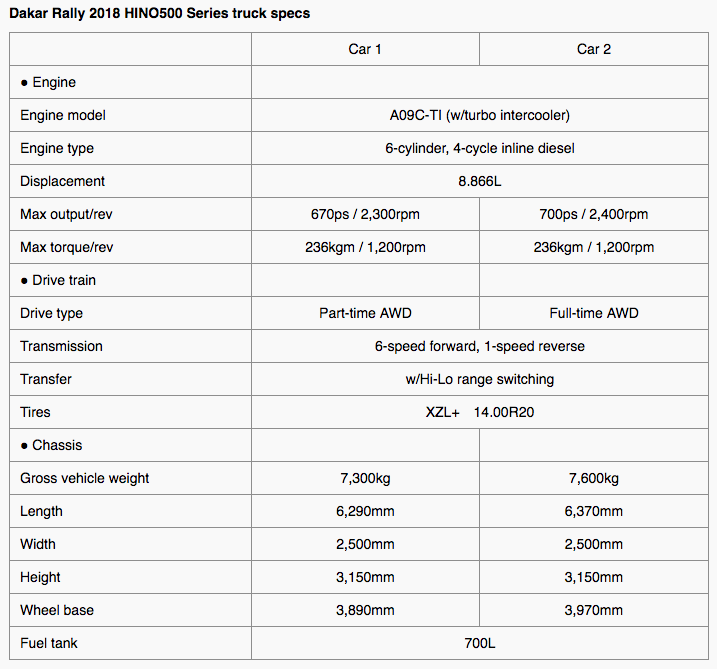
Team Sugawara
A select team of individuals who carry the name and hopes of the Hino brand.
Hino Motors has teamed up with Team Sugawara to enter two HINO 500 Series trucks in Dakar Rally 2018. HINO TEAM SUGAWARA is led by Yoshimasa Sugawara, who has a Dakar Rally-record 34 consecutive entries under his belt, and his son Teruhito Sugawara. Team members include a mechanic and navigators who have the full confidence of the Sugawaras, as well as a mechanic sub-leader who plays a critical role in production processes with his expert skills, a crew of expert mechanics chosen from applicants from Hino dealers nationwide. In addition, dealerships in the countries where the rally will be held have set up truck servicing bases where the trucks will undergo servicing immediately prior to racing. The entire Hino group has come together as a team to take on this challenge.
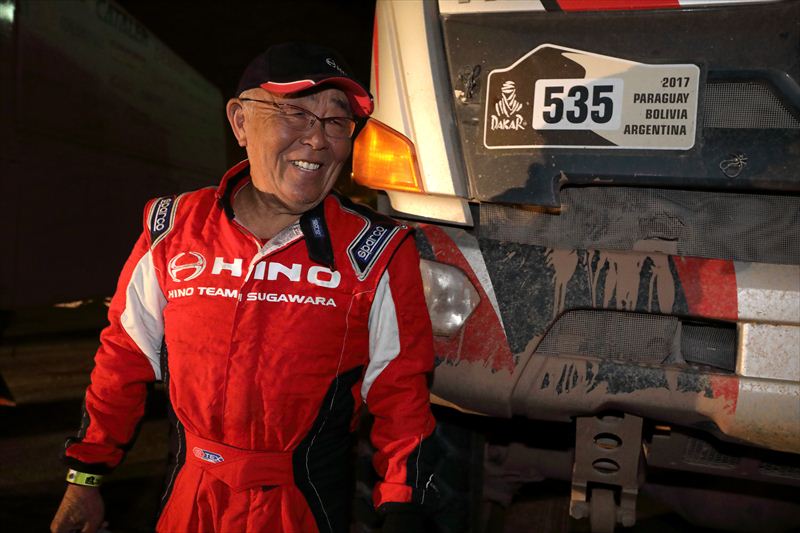
Yoshimasa Sugawara
Team director and driver of Car 1
He has had six second-place finishes in the Trucks category, and won seven championships in the Under 10-litre Class. He holds the Dakar Rally record for 34 consecutive starts.
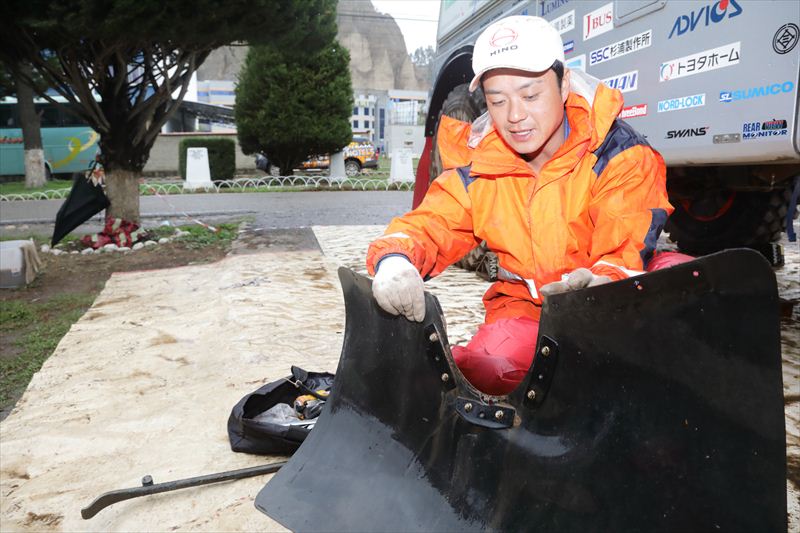
Teruhito Sugawara
Driver of Car 2
Teruhito Sugawara, Yoshimasa Sugawara’s second son, first joined the Dakar Rally team in 1998 as a mechanic, and subsequently navigated for his father. His 2017 win was his eighth straight championship in the Class.

Katsumi Hamura
Navigator of Car 1)
Hamura has navigated for Yoshimasa Sugawara for a total of 14 times* since he first navigated in the Dakar Rally 1992.

Mitsugu Takahashi
Navigator of Car 2)
Having racked up a solid track record as Yoshimasa Sugawara’s navigator in Rally Mongolia (2012, 2013, and 2015), he will navigate in the Dakar Rally 2018 following 2016 and 2017.
Route Plan
The Dakar Rally 2018 will be a commemorative event as it will be the 40th Dakar Rally, and the 10th event since its relocation to South America.
The Dakar Rally 2018 is scheduled to travel through three countries: Peru, Bolivia, and Argentina. Peru will be hosting the rally for the first time in five years since 2013.
Kicking off in Lima, the capital city of Peru, the race will take the teams southward in the Andes towards Bolivia, and skirt the shores of Lake Titicaca before a rest day on Jan. 12 at La Paz, the capital city of Bolivia at an elevation of 3600 m. The contestants will then traverse Bolivia from north to south, eventually reaching the finish line at Cordoba, the second-largest city in Argentina.
The entire rally will be made up of a total of 14 stages. What stands out in this race is that it will involve two loop course stages (where the start and finish lines are set up at the same bivouac), and a marathon stage (where crews race two stages back to back with no support from assistance vehicles at the intervening bivouac).
The entire course will feature the diverse terrains of these three countries, confronting the teams with high altitudes and dunes, and is expected to be another extremely gruelling rally.
